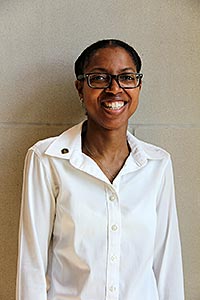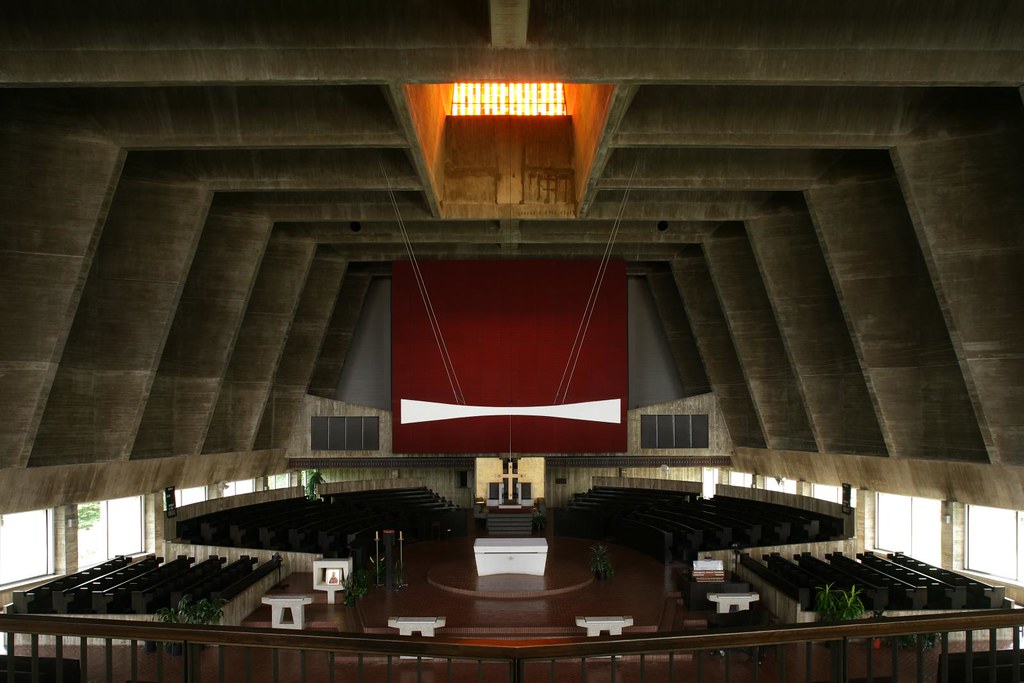The Liturgical Press was founded and is run by the Benedictine monks at St. John's Abbey in Collegeville, Minnesota. It has been a cesspool of dissent and disaster certainly recently and possibly since it's very start. The abbey, founded in 1856, is the largest Benedictine community in the world. Sadly and predictably, it is in a nose dive and its future is uncertain. The monks' average age is 71 with understandably not many vocations.
One does not have to dig deep to uncover the Liturgical Press' agenda. The publications listed above are highlighted on its website.
"Liturgy's Imagined Past" is a veiled attempt at proving women were clergy in the early Church. One of the authors, Teresa Berger, is an academic who specializes in gender theory and has an interest in cyberspace liturgical practices (who doesn't?). Catholicism is one of seven faiths she's participated in so maybe number eight isn't far off. The other author doesn't pretend to be Catholic, listing his faith preference with the Church of England, where everything changes except the bread and wine.
There is a twelve volume set on feminist interpretation of Scripture authored primarily by Protestant academics interested in gender theory, women's ordination, and LGBT issues.



Julia M. O'Brien Stacy Davis Mary Ann Beavis
Do they share the same barber?
Another featured author, Thomas O'Meara, OP, when not delving into Vatican II hijacker, Karl Rahner, SJ, theology, spends his time wondering if ET could be saved.

"Building A New Church" isn't what I initially thought it was about, but architecture. James E Healy, STL, built St. Mark the Evangelist in Independence Missouri.

Beam me up, Scotty.
"An Unfinished Council" is what you'd expect: the dissident excuse for the decline in faith post-Vatican II. People like Richard Gaillardetz argue the "spirit of Vatican II" hasn't been properly implemented - the changes haven't gone far enough. This is similar to those who insist communism is the perfect form of government, it just hasn't been properly implemented by any nation state, yet.
Finally, Timothy Radcliffe, O.P. offers a fresh and new way to pray the Stations Of The Cross, in case St. Alphonsus Liguori's version bores you. Rev. Radcliffe was the Master Dominican from 1992-2001, is currently Pope Francis' consultor for social justice and peace, and is perhaps best known for suggesting men sodomizing each other can reflect Christ's 'self-gift'.
Near the bottom of Liturgical Press's website you can find a link to their blog, Pray Tell. Several of the website's featured authors provide blog posts. Anthony Ruff, O.S.B. is the main contributor. He's also one of fifty three monks of St. John's Abbey accused of sexual abuse/misconduct. Rev.Ruff has blogged about whether the Church misrepresents Jesus and the possibility He didn't found the Church.
Rev.Ruff was a member of the International Commission on English in the Liturgy (ICEL) but resigned in 2011 because he thought the new translation was going to be too hard for us non-liturgists to understand. He has given talks (not the fraternal correction kind) to known dissident groups Call To Action and Future Church.
Just an aside: what's with liturgists throwing temper tantrums and quitting, anyway?
Of course it's not just liturgists who quit in a huff:
Minnesota Gay Priest Resigns Over Vatican Policy
"Collegeville - A priest at St. John’s University said he was resigning his leadership position because of the Vatican’s latest statement that homosexuals should be barred from entering the Roman Catholic priesthood.
“Because I can no longer honestly represent, explain and defend the church’s teaching on homosexuality, I feel I must resign,” the Rev. Bob Pierson said in an e-mail December 14 to administrators and students at St. John’s and the nearby College of St. Benedict.
The Vatican announced last month that it was toughening its stand against gay candidates for the priesthood, advising that men with “deep-seated” gay tendencies or who “support so-called gay culture” shouldn’t be admitted to seminaries or ordained. Others with “transitory” homosexual inclinations can be accepted if they have “clearly overcome” them for three years."
Perhaps the most public monk at St.John's Abbey is Bob Pierson, O.S.B. who believes his authority overrules his Ordinary and the Magisterium.

During Minnesota's debate on same-sex marriage, Bishop Nienstedt gave clear direction on how Catholics in good standing were to vote. Fr. Bob disagreed. At least he was being consistent with his abbey:
1. We believe that human sexual orientation, both heterosexual and homosexual, is blessed by God as part of the original blessing of creation. We reject any suggestion that God withholds his blessings from some parts of his creation, and we do not believe that homosexual persons are objectively disordered.
As far as I can tell, Bob Pierson, O.S.B. is in full communion with Rome (but the SSPX is the problem, right?). He claims to be celibate. Why does it seem the liberal/progressive/spirit of Vatican II orders and dioceses have sex abuse crisis and the traditional ones don't?Father Scott McCaig, superior general of the Companions of the Cross, has some ideas:
"The priesthood was once seen as a manly commitment, almost like going into the military, one that demanded courage, rigor and a sense of dedication that was commended, he said. "You are in a war for souls."
There has also been a kind of false feminization in the Church that strips out anything to do with a male-oriented spirituality, such as military terminology concerning the war for souls, he said."
Father James McLucas had some ideas on this subject too:
"One aspect of the current crisis has escaped scrutiny: the present status of the celibate priesthood following the expansive absorption of many sacred functions by the laity that were formerly reserved to the ordained. Endangering priestly celibacy because it is inherently hostile to a healthy masculinity, this structural revolution evokes an image of a square peg being pounded into a round hole. The post-Conciliar Church is of a different shape from that which housed the traditional theology of the priesthood, and a mandatory celibate priesthood simply doesn't fit. Sadly, all the pieces are in place for the introduction of "optional celibacy" into the Western Rite."

Just in time for Advent, a new Hollywood product is hitting theaters with yet another Catholic Pedophile Priest story. Even one victim is one too many, however, it's worth noting a few facts about clerical sexual abuse in the Catholic Church. First, the incident rate of sexual abuse in the Church is no higher than any other religion and significantly lower than the public school system. Why doesn't Hollywood make movies about Pedophile Teachers? Second, the vast majority of victim in the Church were teenage boys, so not pedophilia. Third, Hollywood, the media, and other Church enemies use any excuse to attack the Bride Of Christ. For example, the Boston Globe wrote about the local scandal more than they did World War II.
However, defending the Church is difficult when stories like this keep slithering out of the shadows.
Secret Files on St. John's Abbey monks show hundreds of possible victims

The rot at St. John's Abbey is covered by the blog Behind The Pine Curtain:
This web site is dedicated to the 260+ known victims of sexual and other misconduct by over sixty members [ View ] of Saint John’s community in Collegeville, Minnesota (USA). The community includes Saint John’s Abbey, Saint John’s University, Saint John’s Prep School, the Liturgical Press, the Hill Museum and Manuscript Library and the School of Theology.
Other blogs such as the Eponymous Flower keep an eye on St. John's Abbey too.
The Abbey's history is a story of decline found in other orders:
As president of the congregation he attended the third and fourth sessions of Vatican II. Saint John’s was also represented at the council by Father Godfrey Diekmann, who served as a peritus for the document on the liturgy. Later he would serve for years as a member of ICEL, the international committee charged with creating English-language texts of the Roman Missal and other liturgical books.
The number of Saint John’s monks peaked at 404 in 1963. In the next decades this number slowly declined as the foundations in the Bahamas, Puerto Rico, and Mexico achieved independent status, the number of young men applying to enter the monastery dwindled, and some professed monks either chose not to make final vows or sought exclaustration and left the community.
The years following Vatican II (1962-1965) were a period of change. The most radical change for the monastic community was the shift from Latin to English in the Mass and the daily round of prayer in choir. Overnight it became possible for the lay brothers and the clerical monks to form a single choir praying the Divine Office in English. This was canonically approved in 1967 when all monks were permitted to make solemn vows, thus eliminating the connection between monastic vows and clerical status which had been in place for centuries.
The following decades saw a changing lifestyle in the abbey. Father Jerome Theisen was elected abbot in 1979 and served until he was elected abbot primate in 1992. A new pattern of community life evolved during the years he and Abbot John Eidenschink held office. Shifting from Latin to English for the Eucharist and Divine Office was a multi-stage change. Like many other monasteries, Saint John’s made do with temporary arrangements of the psalter and readings at first. A temporary version of the Office in English was adopted in 1971. The current seven-volume loose-leaf version was carefully worked out starting in 1983. Antiphons for major feasts have been composed more recently.
Hymns took the place of Gregorian chant. Devotions like Benediction of the Blessed Sacrament, novenas, the Angelus, Stations of the Cross became less frequent. The hour for Morning Prayer went from 4:45 to 7:00 a.m. Nocturnal silence yielded to academic and social activity, evening television and events off campus.
Deeper changes took place. Vatican II emphasized the communal character of the Eucharist. As this sank in, private celebration of Mass in all of those downstairs private chapels was frowned on. Priests were encouraged to concelebrate at the daily conventual Mass around the single altar upstairs, its free-standing central location anticipating precisely the liturgical thinking of Vatican II.
A fundamental change occurred when individual personal accounts were introduced. Personal expenses other than health care were charged to this account and a monk could draw cash for personal use within limits approved by the superiors. Gradually a fleet of abbey cars became available for general use. Getting a blessing before leaving the campus fell into disuse.
The community was getting smaller and older. Entering classes of more than three were rare. At the other end of the age scale a whole new generation of monks in their seventies and eighties and nineties needed some or much care. In 1976 Abbot John Eidenschink approved remodeling a section of the second-floor corridor in the Quad as a retirement center with its own nurses’ station, dining room, and chapel. Dedicated as Saint Raphael’s Hall, it was expanded under each of the following abbots to a current capacity of 26 beds. It was thoroughly renovated in 2008.
It seems to me their problems really got going soon after their new church was built. Lex Orandi. Lex Credendi. Lex Vivendi.




In all this concrete there are no kneelers, Tabernacle, and the Stations of the Cross are set in the floor.

You can watch their Masses on-line. To save you some time, yes liturgical abuses are prevalent. The November 22 homily blames the empty pews and their withering order on the natural order of things. Self-awareness has yet to enter their sanctuary.
The homilist is right about one thing though. Sodomy among the clergy isn't new. A thousand years ago St. Peter Damian addressed the problem and proposed solutions. Hopefully the good monks will indeed look to the past to fix the present if they are to have a future.
Hey that's not fair, you just stole the reading list from my seminary theology courses! (Do seminaries still have their students read these books, I would like to know).
ReplyDelete